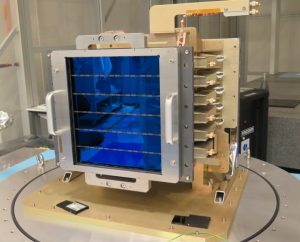Arrived safely. The focal plane of the visible imager on the Euclid satellite has just been delivered by Irfu to the laboratory responsible for the instrument (MSSL/UK) to continue its integration into the satellite, which is scheduled to take off in 2022.
The first studies of this focal plane have been carried out at Irfu since 2010 and after almost 10 years of development and testing, it was fully tested by Irfu in 2019. This Focal Plane is composed of 36 CDDs totalizing more than 600 million pixels. Each image acquired in flight by this focal plane will make it possible to characterize more than 50,000 galaxies. It is the second largest camera, observing in the visible, launched into space after that of the Gaïa satellite. In space, its observations will allow the measurement of galaxy deformations due to weak gravitational lensing effects induced by clusters of dark matter that light encounters on its way to us. These gravitational distortion effects measured at different ages of the Universe will provide measurements of the distribution of dark matter and will be a constraint on dark energy.
*Mullard Space Science Laboratory
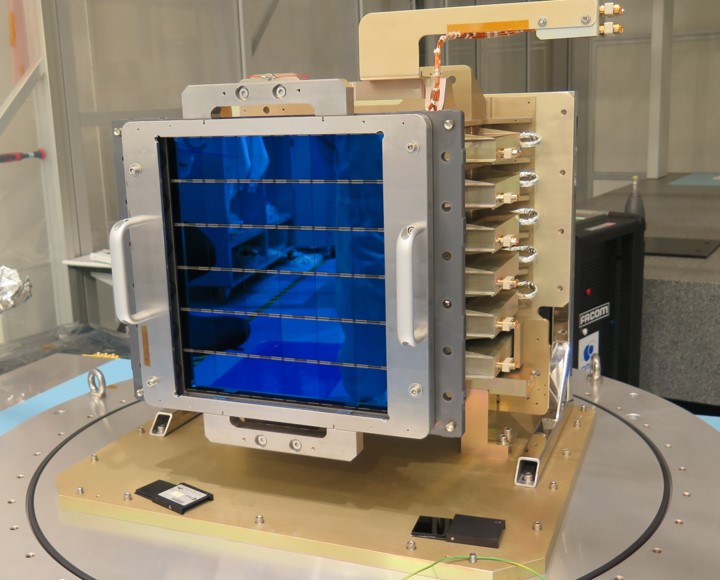
10 years of development
The focal plane, one of the elements of the VIS instrument (a wide-field imager for visible wavelengths) was designed as early as 2010. The work carried out by the teams has followed a path marked out with appointments:
- October 2011: Selection of the Euclid mission by the European Space Agency (ESA)
- June 2012: Financial commitment of international agencies for this mission (“Adoption” of the mission)
- Feb 2014 : “Preliminary Design Review”
- Sept 2016 : “Critically design Review”
- April 2016: Delivery of the electric model
- May 2017: Delivery of the structural and mechanical model
- Jan 2020 : Delivery of the flight model
The focal plane was assembled at the CEA Astrophysics Department in the summer of 2019 under particularly demanding cleanliness conditions related to the scientific needs of the Euclid mission.
In November 2019, it was tested at the Liège Space Centre under the responsibility of the CEA to verify that it will withstand the vibrations of the launch. Then it was tested at the CEA Astrophysics Department in December to ensure that it operates nominally at its operational thermal conditions when the detectors are cooled to -120°C while the electronic chains are at room temperature. Metrological measurements were then performed to ensure the precise position of each detector.
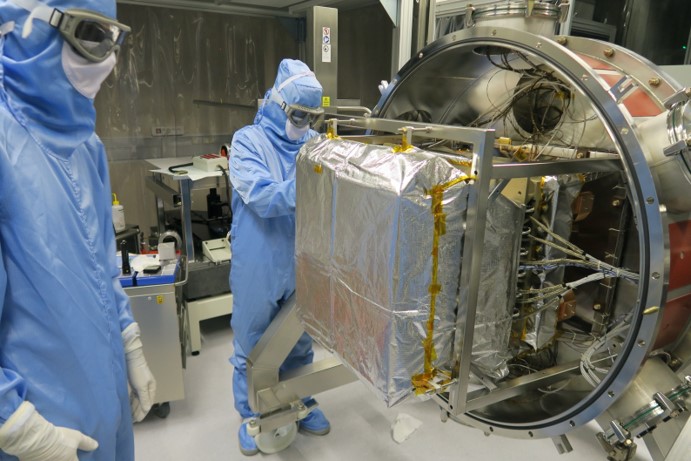
Credits : J. Fontignie / CEA
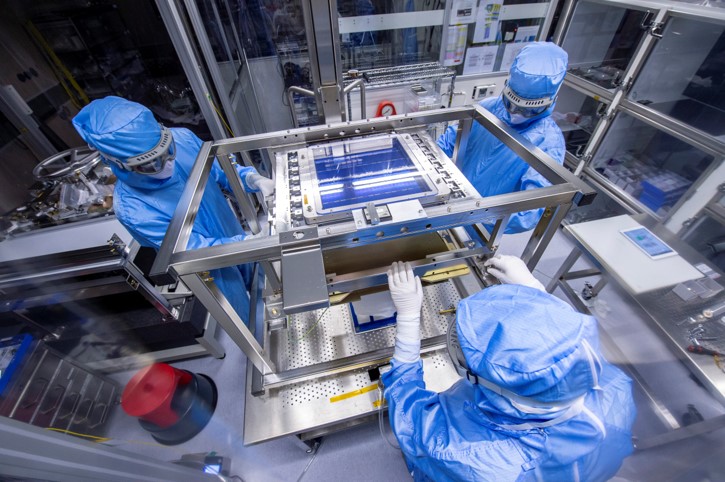
This instrument is part of ESA's Euclid mission, within the “Cosmic Vision 2015-2025” programme, in an exciting context: to strengthen the new cosmological model known as the “lambda-CDM” model, which is based on 6 parameters related to three components whose origin and nature are unknown: dark matter (CDM for Cold Dark Matter), dark energy (lambda) and the fields responsible for the inflation of the Universe. Identifying and understanding these three components could then lead to a revolution in fundamental physics as we know it.
To meet this ultimate goal, Euclid will focus on the observation of galaxies, in particular through the resolution of its new focal plane. It will precisely measure the small distortions in the images of distant galaxies caused by the gravitational action of large structures on the line of sight. The study of these deformations at different times in the Universe will be used to measure the cosmological parameters that affect the growth of cosmic structures.
Unlike current ground-based telescope soundings, Euclid's wide-field space imagery will be free from the disruptive effects of the Earth's atmosphere, de facto excluding their limiting aspect. It will provide very high sensitivity (more precise images of galaxies) and, thanks to fine and stable images, will limit systematic optical defects that are critical for the study of low distortions.
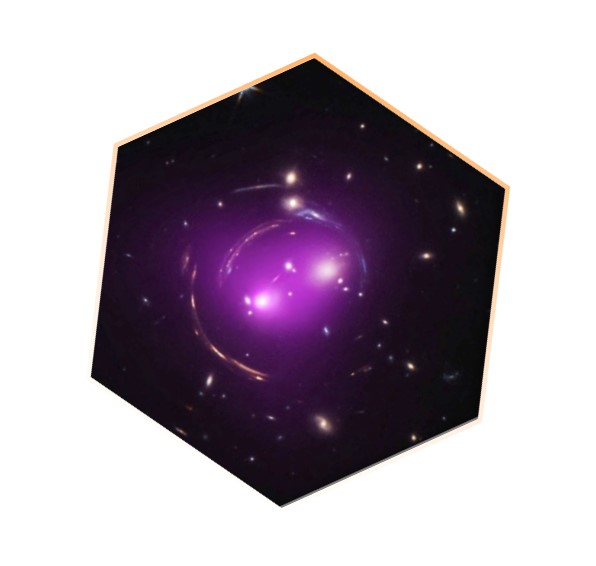
They participated in the design
The Mullard Space Science Laboratory (United Kingdom) is in charge of the development of this instrument. Several international laboratories and industries are involved in its design and development in Belgium, France, Italy, the United Kingdom and Switzerland.
What about France?
The Astrophysics Department of the CEA in Saclay is responsible for the design, construction and integration of the instrument's focal plane. This laboratory is also responsible for the supply of an electronic system, the PMCU (Power Management and Control Unit), which ensures the control of the VIS instrument elements placed in the Euclid telescope.
The CNRS Institute for Space Astrophysics (IAS) in Orsay is responsible for the supply of the calibration system (Calibration Unit).
Irfu contact: Michel Berthé (DAp)
Previous highlights related to the Euclid mission at Irfu


